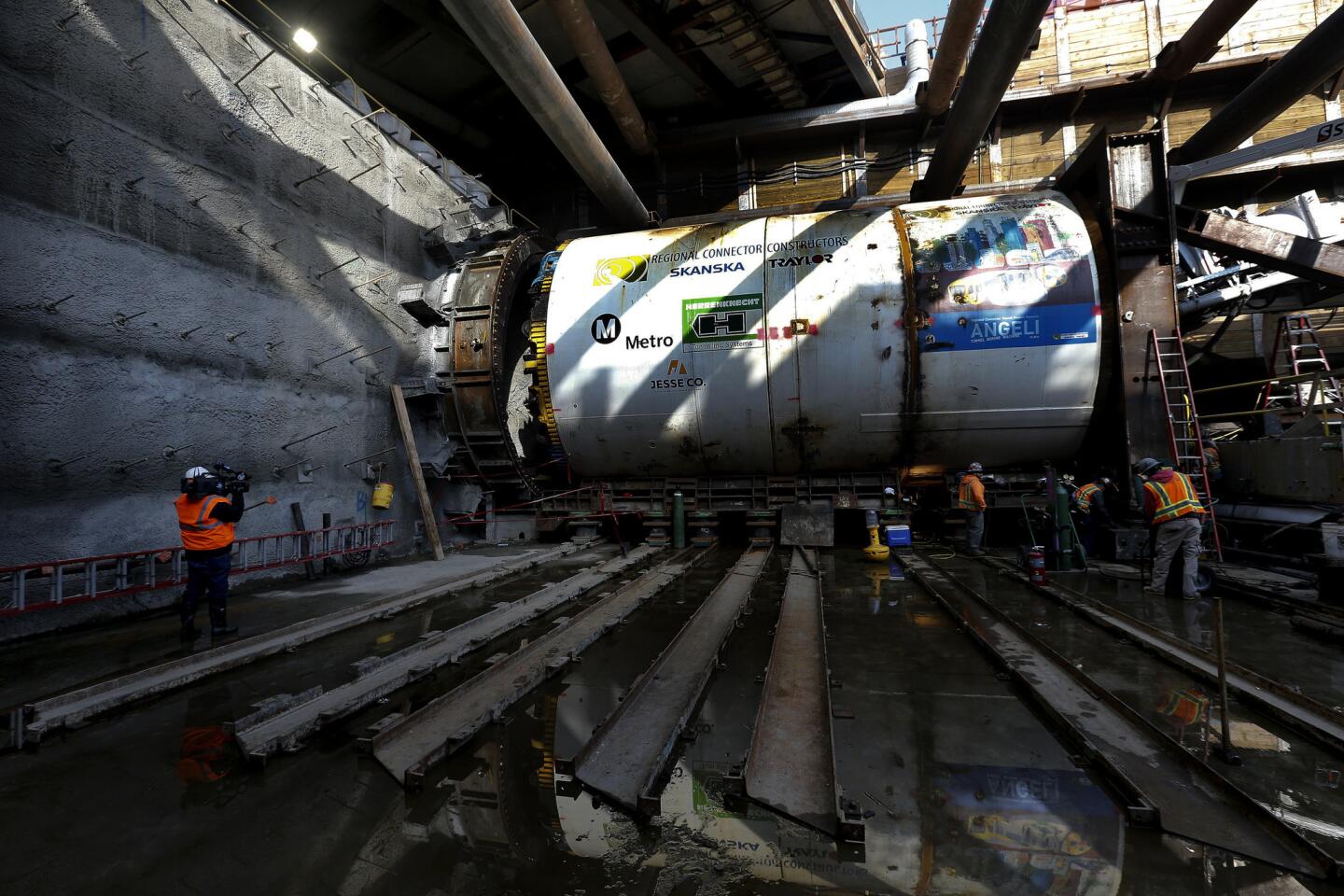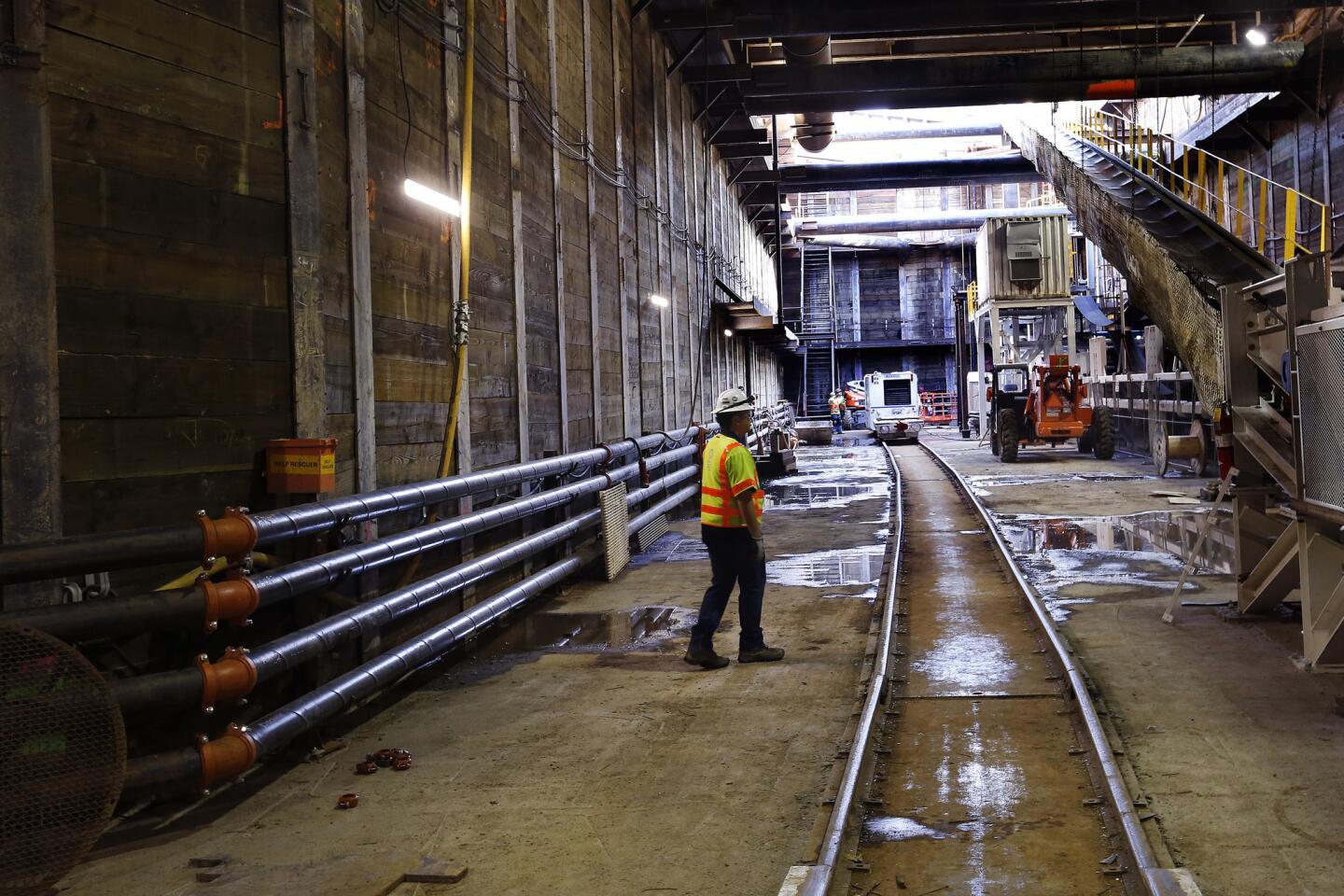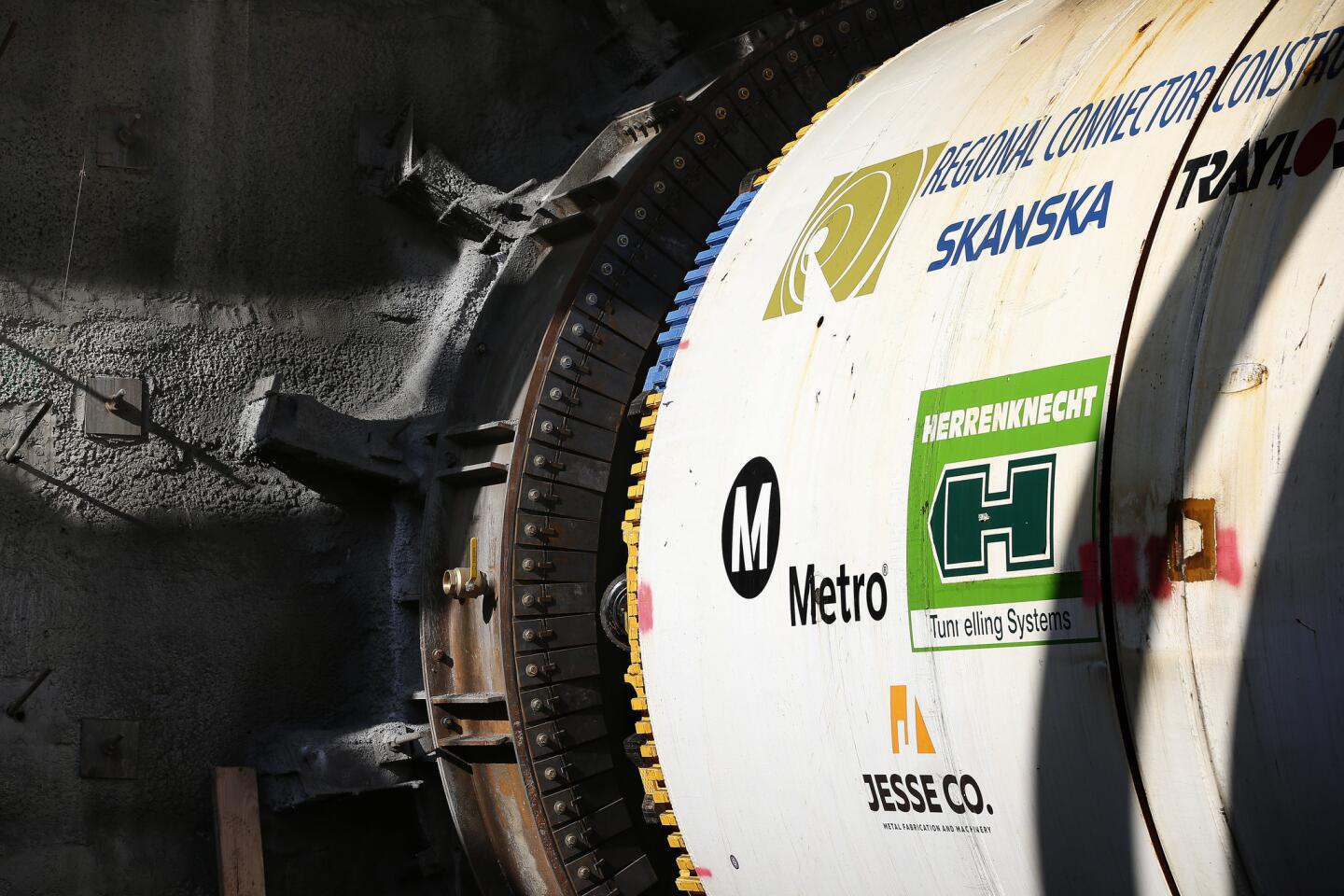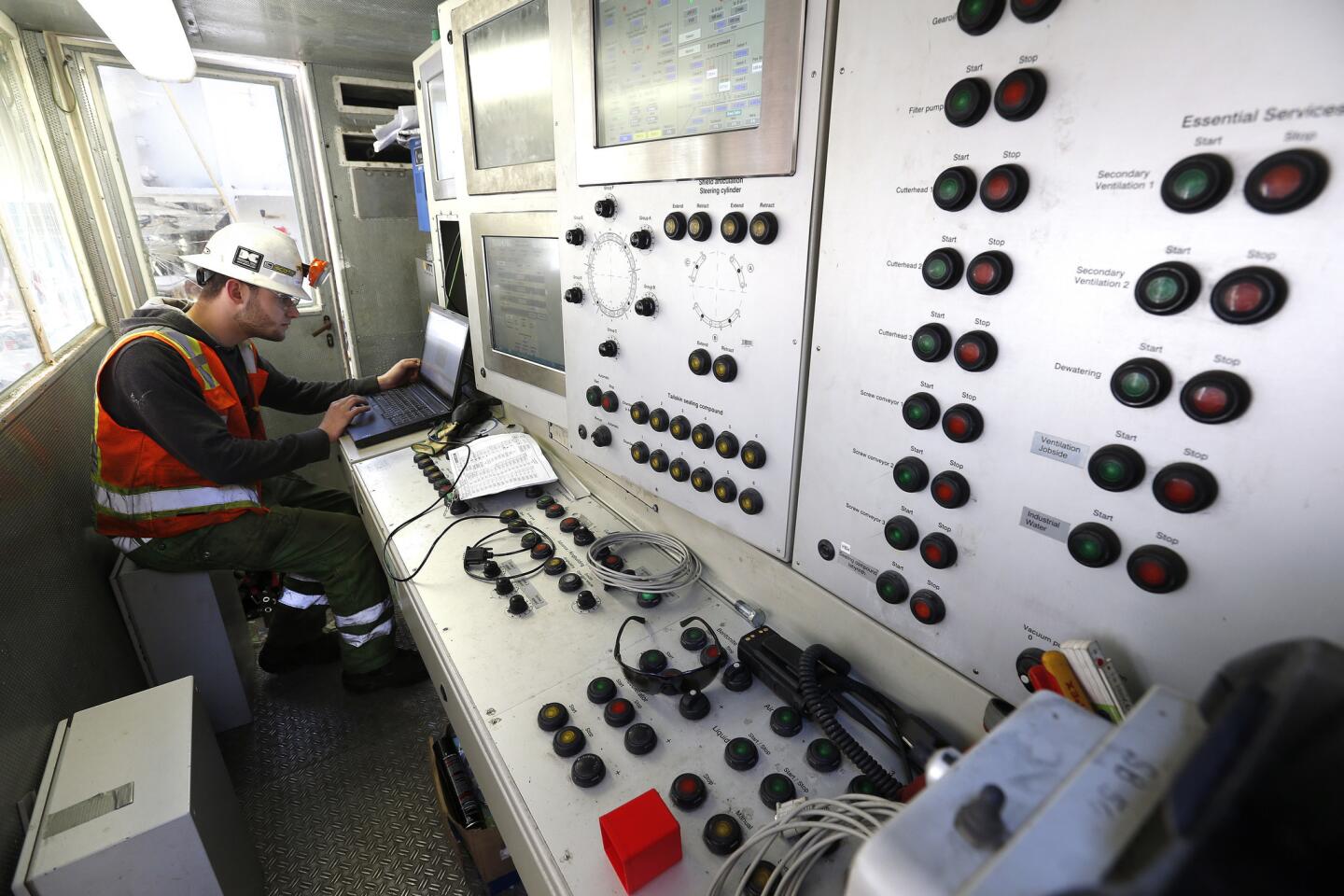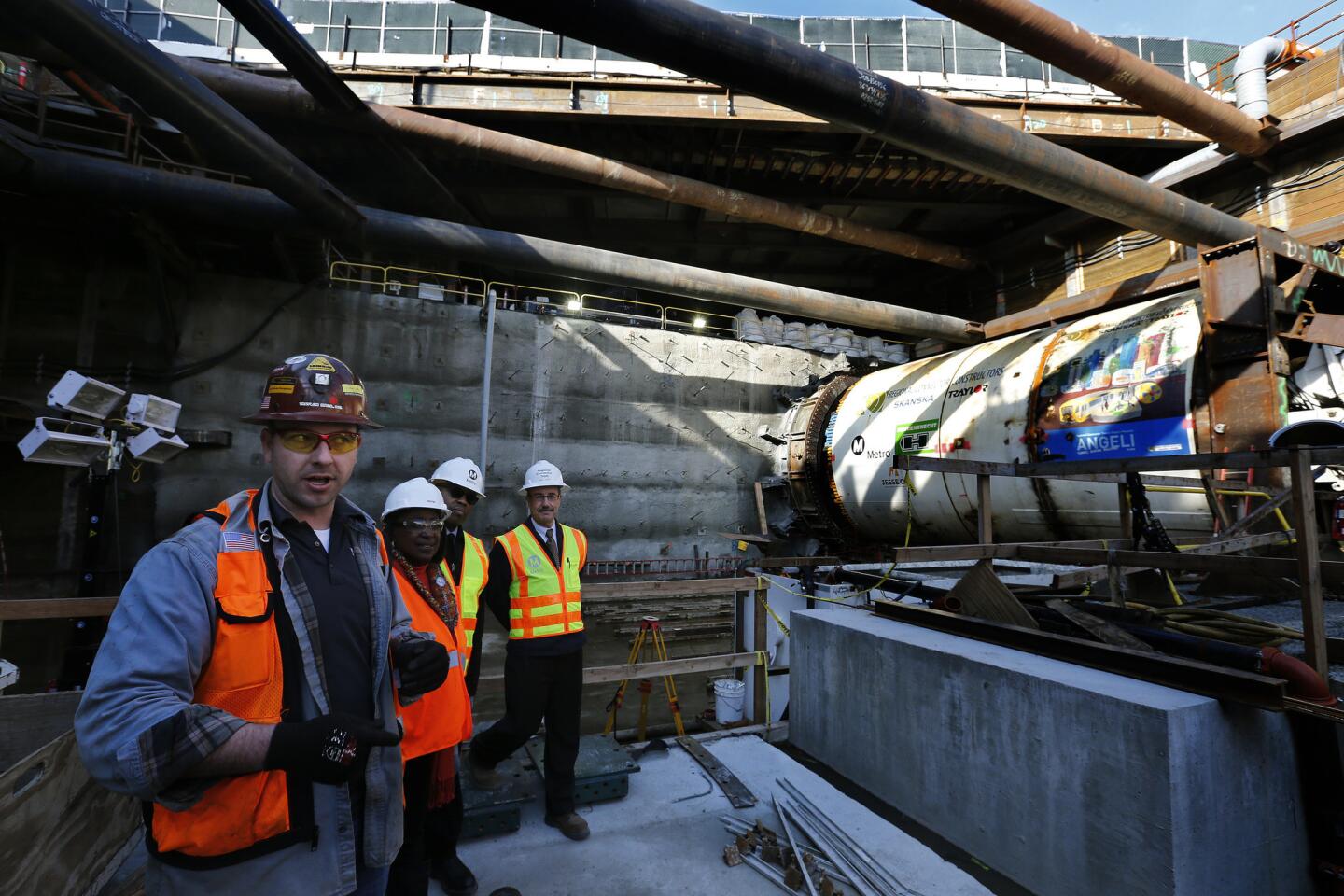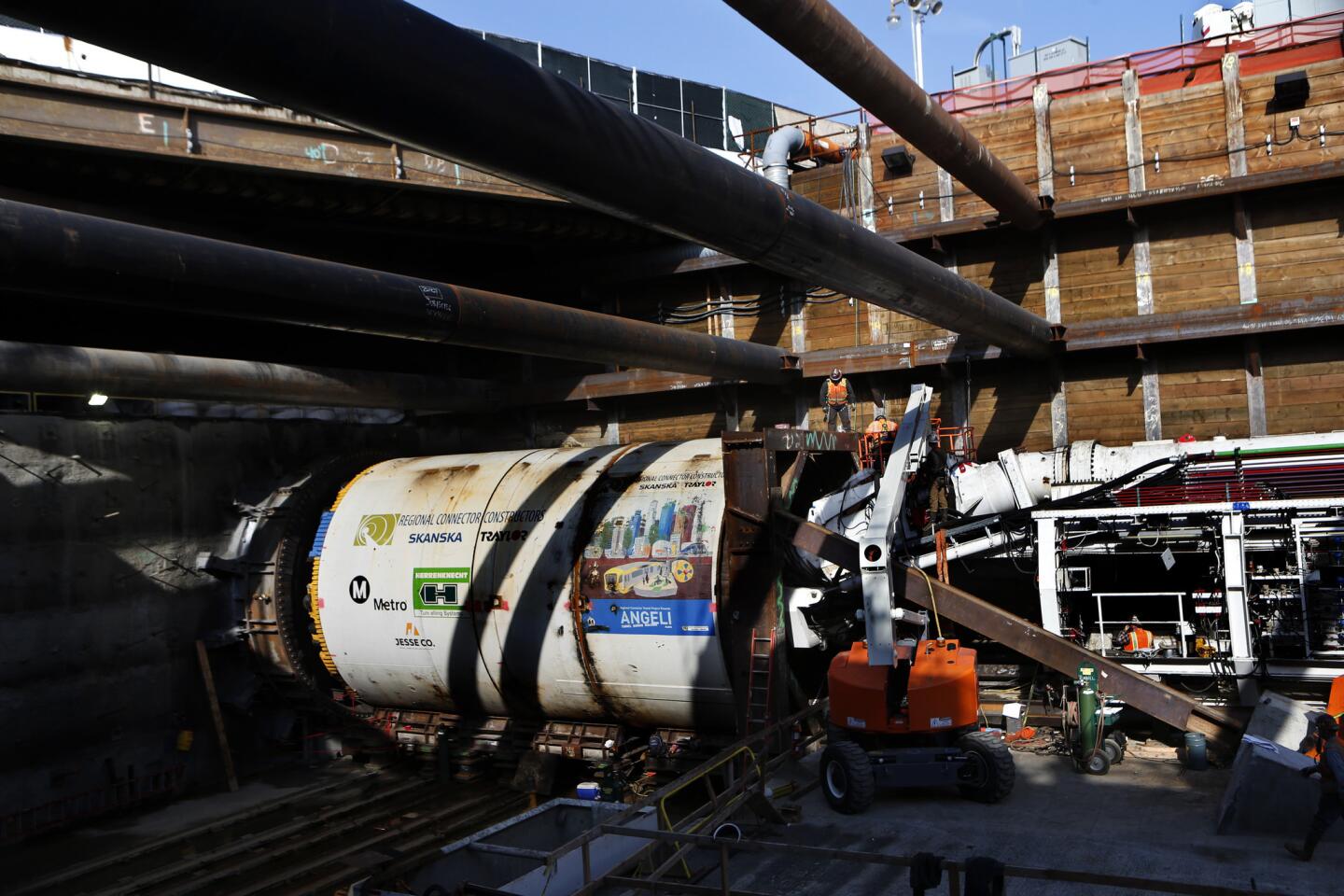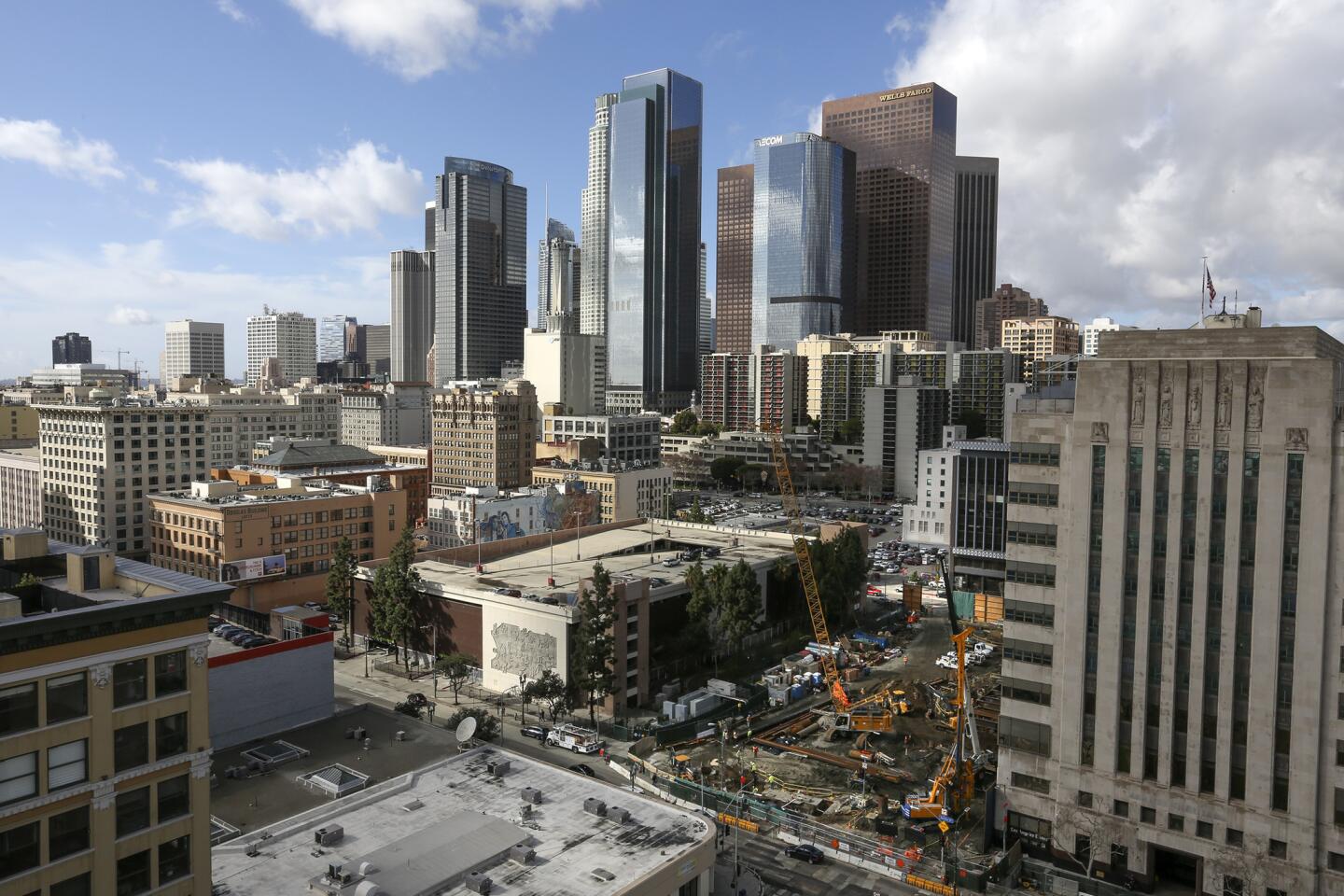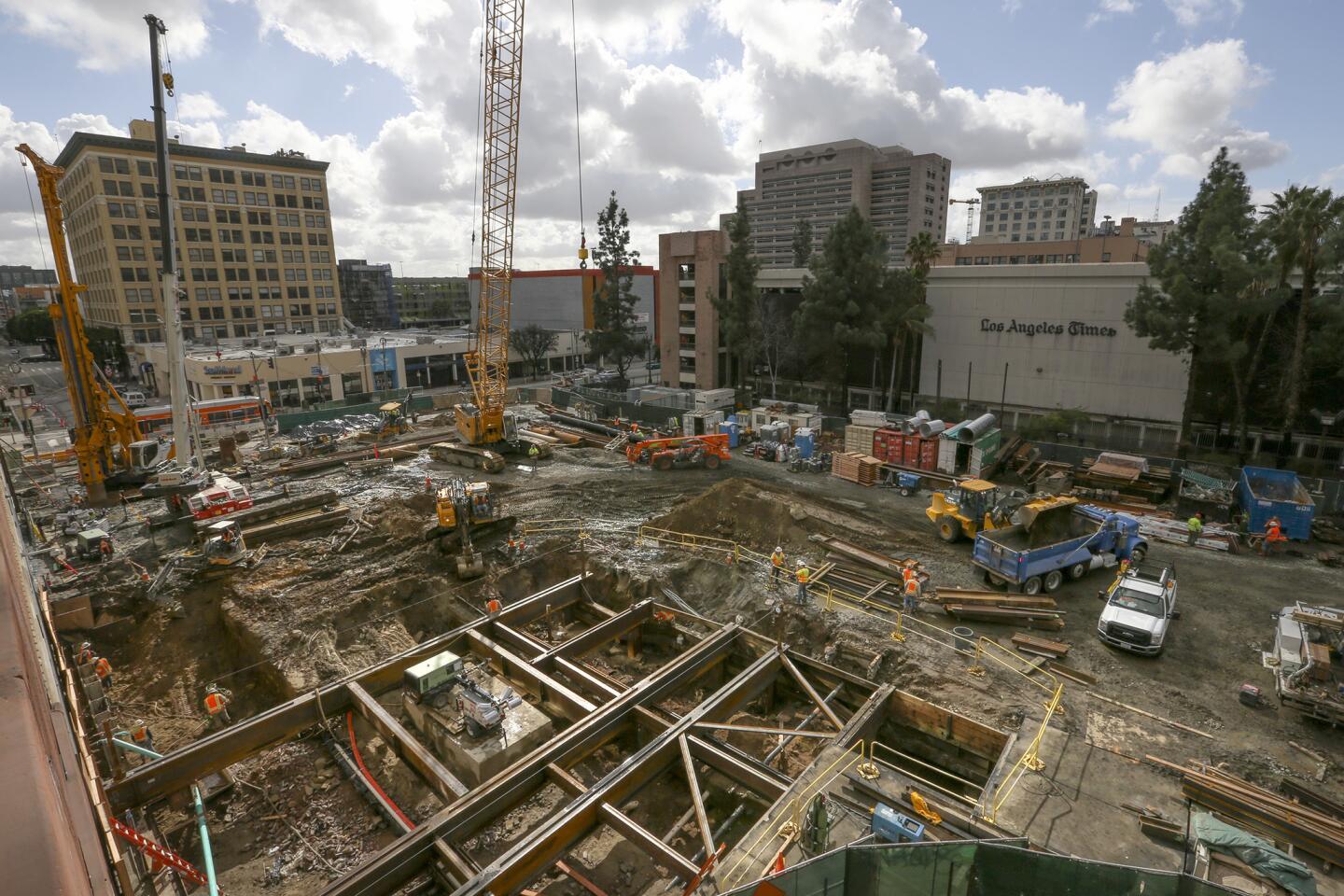Metro officials want to increase the budget for this downtown subway project -- again

Twin tunnels between Union Station and the 7th Street/Metro Center rail hub will tie three rail lines together. Mel Melcon / Los Angeles Times
Three years ago, when transportation officials began an ambitious project to connect a tangle of light-rail lines beneath downtown Los Angeles, they said construction would cost $1.36 billion.
Since then, the Metropolitan Transportation Authority has twice sought more funding for the Downtown Regional Connector, including a request this week for an additional $199 million.
If approved, the increase will raise the cost of the project to $1.75 billion, 28% higher than originally budgeted.
Officials blamed the latest increase on delays arising from the complex task of locating and moving long-buried utility lines, many of which were not listed in government records.
The regional connector has become “about 6% construction project, with the remainder being a utilities project,” Metro director Jacqueline Dupont-Walker said Thursday at a committee meeting.
Officials also acknowledged that they hadn’t budgeted enough for other project costs, including land acquisition, consultants and legal fees.
Chief Executive Phil Washington described the increase as “right-sizing” and said Metro now has a better grasp of what risks lie ahead and how much they may cost.
“We feel good about it,” Washington said. “We won’t be coming back again.”
Even if Metro’s directors approve the $199-million increase, crews will face an aggressive schedule to meet a May 2021 construction deadline set by federal officials. Missing that deadline could jeopardize hundreds of millions of dollars in federal grants.
Metro staff warned in a report that more delays and cost increases “are to be expected” if any new problems arise over the next four years, including difficulties securing permission for crews to work late at night and early in the morning.
The regional connector is seen as an essential piece in the county’s rapidly growing rail system.
Twin subway tunnels will tie together the Blue, Expo and Gold lines, allowing passengers to ride from Santa Monica to East Los Angeles, and from Azusa to Long Beach, without changing trains. Those trips currently require two transfers.
The project will also add three stations: at 1st Street and Central Avenue, 2nd Street and Broadway, and 2nd and Hope streets. Officials say the connector is expected to increase rail ridership by 17,000 trips a day.
Contractors are working in a 100-foot hole in Little Tokyo preparing to launch a 1,000-ton German boring machine known as “Angeli.” It will begin churning westward later this month at the pace of 4 inches a minute, or 65 to 75 feet a day, digging twin 1.1-mile tunnels.
Once it reaches the Financial District, crews will take it apart, move it back to Little Tokyo, reassemble it and dig the second tunnel — a process expected to take about a year.
Before digging could begin, crews spent months relocating utility pipes and lines.
State records describing their location and condition were “inadequate,” Dupont-Walker said. Crews discovered decades-old water lines and electrical equipment, sometimes badly deteriorated.
“In a concentrated urban center where people have been living for more than 100 years, you start to find things that you didn’t know were there,” said Tim Taylor, an associate professor of civil engineering at the University of Kentucky who specializes in construction management.
“It’s hard for me to understand that in 2017, we don’t know where the utilities are that need to be relocated for these projects,” said Los Angeles County Supervisor Janice Hahn, also a Metro director.
The unexpected utility work, and the delays that came with it, cost Metro more than $79 million and ate through much of the funding allocated for unexpected expenses, according to the staff report. In December 2015, Metro’s board approved a $130-million budget increase to replenish those funds.
The report said planners had not budgeted adequately for unexpected cost increases. The original budget set aside about $92.7 million, or 6.5% of the total project budget.
The report also cited initial “insufficient” funding for third-party costs, including consultants. Those costs are likely to rise 47% by the end of construction, from an original budget of $154.6 million to about $227.3 million, the report said.
Consultants and other “soft costs,” including legal counsel and community relations, now represent about 16% of the total project budget, which Metro said is “consistent with industry standards.”
Previous staff reports have noted that the original budget was set early in the planning process, as the agency sought to expedite a federal funding agreement worth $893 million.
In that agreement, Metro said the regional connector would open to passengers by May 29, 2021. Officials built five months of cushion into the construction schedule for unplanned delays. That leeway has since disappeared.
The latest budget increase request comes as Metro’s Washington seeks more authority to negotiate contract modifications without board approval. Currently, any so-called change order of more than $1 million requires a board vote, which Washington said can add weeks of costly delays to fast-moving projects.
Instead, he has proposed negotiating all contract changes without board approval, unless they increase the total budget, with monthly reports provided to directors.
“This is central to our ability to keep these projects on time and on budget,” Washington said. One month of delay can cost Metro at least $2 million in additional labor costs, and often more, he said.
The board is expected to take up the proposal on change orders next week. On Thursday, board members expressed concern that granting more leeway to negotiate changes could reduce transparency and add to cost overruns.
“The idea that the CEO could approve change order after change order after change order, and then tell us, ‘We’ve hit the top’ — is that not a possibility? ” said Los Angeles County Supervisor Sheila Kuehl. She added that the idea gave her “a little heartburn.”
Twitter: @laura_nelson
MORE ON TRANSIT
L.A. Metro launches hotline for transit riders who have been harassed
Next phase of the Wilshire subway receives $1.6 billion in federal funds
More to Read
Sign up for Essential California
The most important California stories and recommendations in your inbox every morning.
You may occasionally receive promotional content from the Los Angeles Times.
